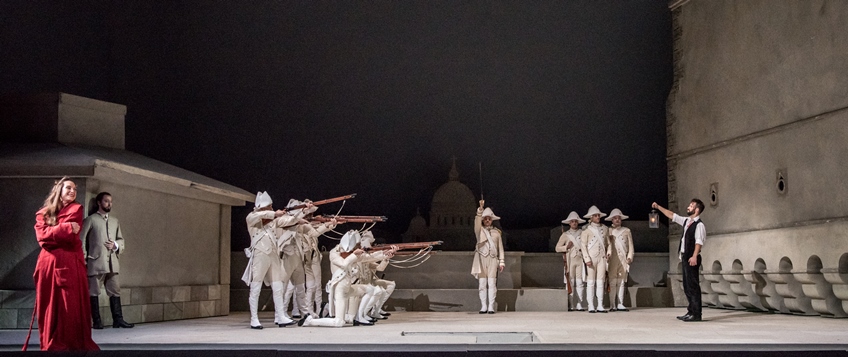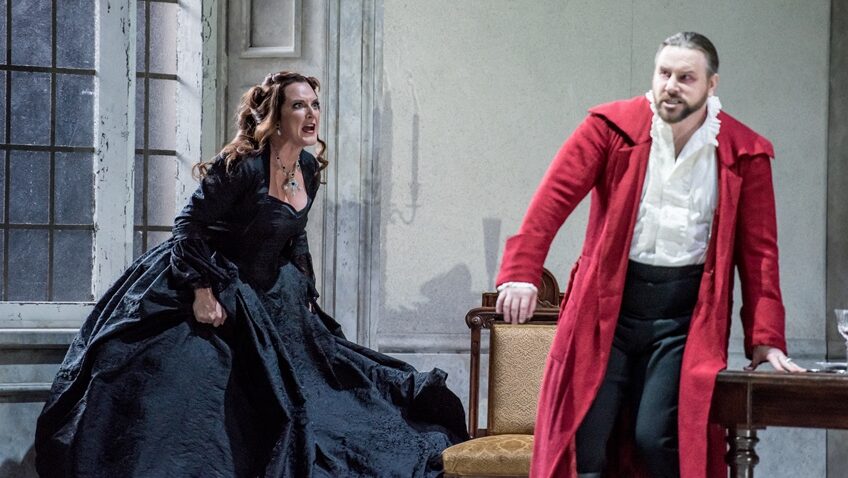Can Tosca, the celebrated diva, famous for her jealousy, save Cavaradossi, her lover, a Republican sympathiser, from a traitor’s death and foil Scarpia, the sadistic Chief of Police?
Victorien Sardou, the most prolific of the French nineteenth century dramatists, wrote Tosca as a vehicle for the great French actress Sarah Bernhardt, who on her visit to England was said to have generated enough electricity to light up the streets of London.
Christof Loy’s production, conducted by Leo Hussain, is ENO’s co-production with Finnish National Opera and Ballet.
The evening began with an announcement by Annilese Miskimmon, ENO’s artistic director, that Noel Bouley had a sore throat and he would mime Scarpia and Roland Wood would sing Scarpia (from the side of the stage by the pros arch). The positive aspect of this arrangement, she joked, would be that the audience would get two Scarpias for the price of one. Inevitably, the performance was diminished.
There is nothing subtle about Sardou’s play. A 19th century audience would have relished the unashamed melodrama: the political and sexual intrigue, the police interrogation and torture, the attempted rape and murder, the mock military execution (which turns out to be real) plus the heroine committing suicide by leaping to her death from the battlements of the Castello Sant’Angelo in Rome.

Puccini’s high spot is the Te Deum at the end of the first act. The counterpointing of the religious service and Scarpia’s exultation. punctuated by the powerful boom of a canon (signaling a prisoner has escaped), is thrilling.
The church in Loy’s production is sparse and lacking in grandeur. Disappointingly, too, there is no grand procession of priests, choirboys and cardinal to the high altar. The scene is not as awesome as I have known it.
An innovation, however, is to have Scarpia so overwhelmed by his murderous and lecherous thoughts during the service that he has an orgasm and faints on the spot in front of the whole congregation.
Adam Smith sings with panache as Cavaradossi. It is a pity that he and Sinead Campbell-Wallace a lyrical Tosca, should have to sing their final passionate love duet downstage in front of a lush drop curtain. It lessens the reality of their performance at this crucial moment.
Another issue Loy’s production, which confusingly embraces different periods, has not solved is those stretches when there is music but no singing. The singers are stranded with nothing to do and the audience is left with nothing to watch.
To learn more about Robert Tanitch and his reviews, click here to go to his website 




